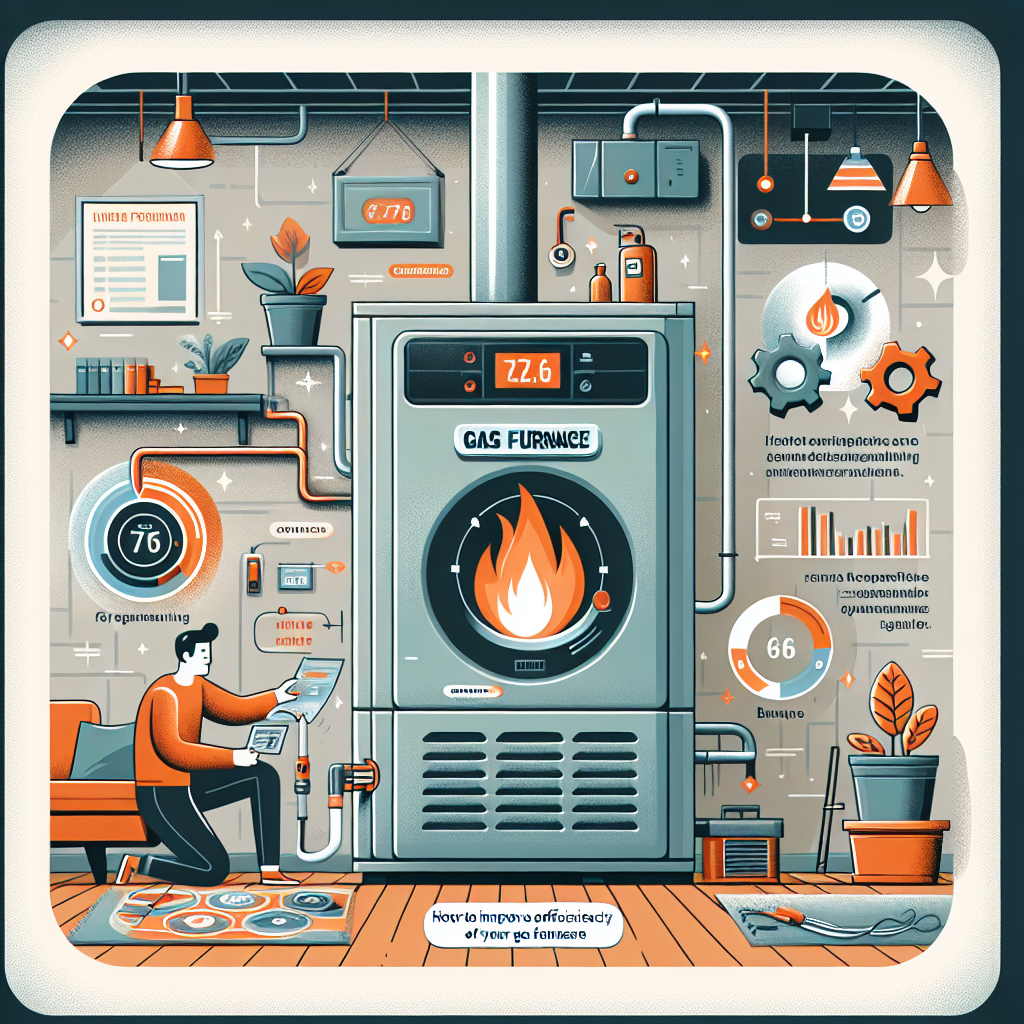As the temperature drops, ensuring your home remains warm and comfortable becomes a priority. A gas furnace is an efficient heating option for many homeowners, but over time, its performance can dwindle. Improving the efficiency of your gas furnace not only results in a more comfortable living space, but it can also reduce your energy bills and extend the lifespan of your heating system. In this guide, we will explore practical steps to enhance your furnace’s performance while considering a few human touches along the way.
Why Furnace Efficiency Matters
Furnace efficiency is crucial for several reasons. Improved efficiency means:
- Lower Energy Bills: An efficient furnace consumes less fuel, resulting in cost savings on your monthly bills.
- Environmental Impact: Reducing fuel consumption helps lower your carbon footprint, contributing to greater environmental sustainability.
- Increased Comfort: An effective furnace maintains consistent temperatures, keeping your living space cozy during chilly months.
- Longevity: Regular maintenance and efficient operation can prolong the life of your furnace, saving you from premature replacement costs.
Regular Maintenance: The Foundation of Efficiency
Schedule Yearly Inspections
Just like your car, your gas furnace requires regular check-ups. Annual professional inspections ensure that your furnace operates at peak efficiency. During this inspection, technicians can identify and rectify potential issues before they become costly repairs.
Change or Clean Filters
Over time, furnace filters can become clogged with dust and debris. Check your gas furnace filter monthly and replace or clean it as needed—typically every 1-3 months. A clean filter allows better airflow, which not only boosts efficiency but also improves the indoor air quality in your home.
Calibrate Your Thermostat
Program for Comfort
Investing in a programmable thermostat can drastically improve your gas furnace’s efficiency. By allowing you to set different temperatures for different times of the day, you ensure that you’re not heating your home while you’re away. Set your thermostat a few degrees lower during the night and when you’re out of the house to save energy.
Ensure Proper Placement
Where your thermostat is located can affect how your furnace operates. Avoid placing it near drafts, direct sunlight, or heat sources, as these can lead to inaccurate temperature readings. Positioning your thermostat correctly ensures your gas furnace works optimally.
Enhance Your Home’s Insulation
Seal Drafts and Leaks
One of the most common culprits of heat loss is drafty windows and doors. Inspect your home for gaps and leaks and seal them with weatherstripping or caulk. This simple measure prevents your warm air from escaping and reduces the burden on your furnace.
Insulate Your Attic and Walls
Good insulation is vital for preventing heat loss. If your attic or walls are poorly insulated, consider upgrading your insulation to keep the heat where it belongs—inside your home.
Upgrade to High-Efficiency Equipment
Consider an Energy-Efficient Furnace
If your furnace is over 15 years old, it may be time to consider an upgrade. High-efficiency gas furnaces can be more than 90% efficient compared to older models, which can separate heat and energy losses. Not only do you improve your home’s comfort, but you also save significantly on energy bills in the long run.
Invest in ECM Blower Motors
If you’re looking for an upgrade that won’t break the bank, consider replacing your standard blower motor with an Electronically Commutated Motor (ECM). ECMs use less electricity and adjust their speed to the heating demand, making them an efficient addition to your existing system.
Utilize Ceiling Fans
Enhance Air Circulation
Using ceiling fans can help distribute heat more evenly throughout your home. Running fans in a clockwise direction during the winter will circulate warm air that tends to rise to the ceiling, pushing it back down into the living space. This simple change can help maintain a comfortable temperature without overworking your furnace.
Conclusion: A Warm Home Awaits
Improving the efficiency of your gas furnace doesn’t have to be a daunting task. By implementing regular maintenance, enhancing insulation, optimizing your thermostat usage, and considering upgrades, you can create a more comfortable and energy-efficient home.
As you prepare for the colder months, take the time to evaluate your heating system. With a little care and attention, you’ll enjoy a warm and inviting space while saving money and protecting the planet. Your gas furnace will thank you—just as your family will appreciate the cozy comfort it provides.
Remember, every little effort counts, and your home deserves the best heating possible! Start today and feel the difference.


